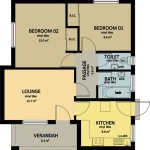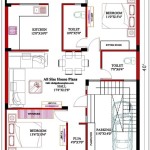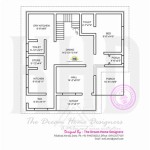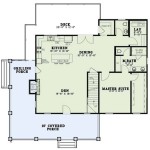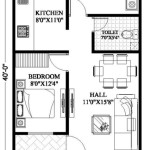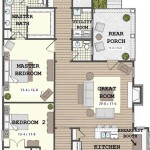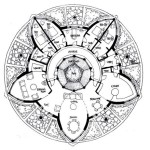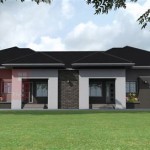Essential Aspects of Guest Cottages Floor Plans
When designing a guest cottage, careful consideration must be given to the floor plan to ensure both functionality and comfort for guests. Here are some essential aspects to consider:
1. Determine the Size and Scope
The size of the guest cottage will depend on the number of guests it is intended to accommodate and the desired level of amenities. Consider the following:
- Bedrooms: How many bedrooms are needed? Single or double occupancy?
- Bathrooms: One bathroom per bedroom is ideal, but consider a shared bathroom if space is limited.
- Kitchen: A kitchenette with basic appliances (sink, refrigerator, microwave) is usually sufficient.
- Living area: A comfortable space for guests to relax, entertain, and dine.
- Outdoor space: A patio or deck extends living space and provides a private relaxation area.
2. Create a Functional Layout
The layout should flow seamlessly and provide easy access to all areas. Consider the following:
- Entryway: A designated entryway helps keep the main living space tidy.
- Open concept: Combining the living, dining, and kitchen areas creates a spacious and sociable atmosphere.
- Private spaces: Bedrooms and bathrooms should be located away from the main living area for privacy.
- Storage: Provide ample storage space for guests' belongings, such as closets, drawers, and shelves.
3. Optimize Space and Light
Make the most of the available space and natural light with the following strategies:
- Built-ins: Built-in furniture, such as shelving or seating, can save space and add style.
- Multipurpose areas: Use convertible furniture that can serve multiple purposes, such as a sofa bed or a desk that doubles as a dining table.
- Large windows: Allow natural light to flood the space, creating a bright and airy atmosphere.
- Skylights: Introduce additional natural light in areas that may be dark.
4. Consider Accessibility Features
If guests with disabilities are likely to use the cottage, accessibility features are essential. Consider:
- Wide doorways: Allow for easy wheelchair access.
- Grab bars: Provide support in bathrooms and other areas where needed.
- Ramped entrances: Ensure safe and easy entry for wheelchairs.
- Non-slip flooring: Reduce the risk of slips and falls.
5. Choose a Style That Matches the Main House
While the guest cottage can have its own unique character, it should complement the architectural style of the main house. Consider using similar materials, colors, and design elements.
6. Provide Privacy for Guests
Guests should feel comfortable and private in their cottage. Consider the following:
- Separate entrances: Provide a dedicated entrance for guests to avoid crossing paths with the main house occupants.
- Private outdoor space: A patio or deck screened from the main house provides a secluded spot for guests to relax.
- Soundproofing: Use sound-insulating materials to minimize noise between the guest cottage and the main house.
7. Consider Future Expansions
If future expansion is a possibility, plan ahead by incorporating flexible features into the design. For example, consider:
- Unfinished attic space: Provides the potential for additional bedrooms or storage space.
- Unused basement: Can be converted into a recreation room or guest suite.
- Extensible floor plan: Allows for easy addition of rooms or modules in the future.

Historic Shed Cottage Tiny House Floor Plans Guest Small

Guest House With Kitchen Plans Small Floor

Gorgeous Guest House Floor Plans Interior Design Ideas Alisha Taylor

Gorgeous Guest House Floor Plans Interior Design Ideas Alisha Taylor

Guest House Residential Design Services

Guest House Plans Small Floor
Small Guest House Plan Floor

Guesthouse Plans For A Small 2 Bedroom Lakeside Cabin

One Bedroom Guest House 69638am Architectural Designs Plans

Guest House Residential Design Services

